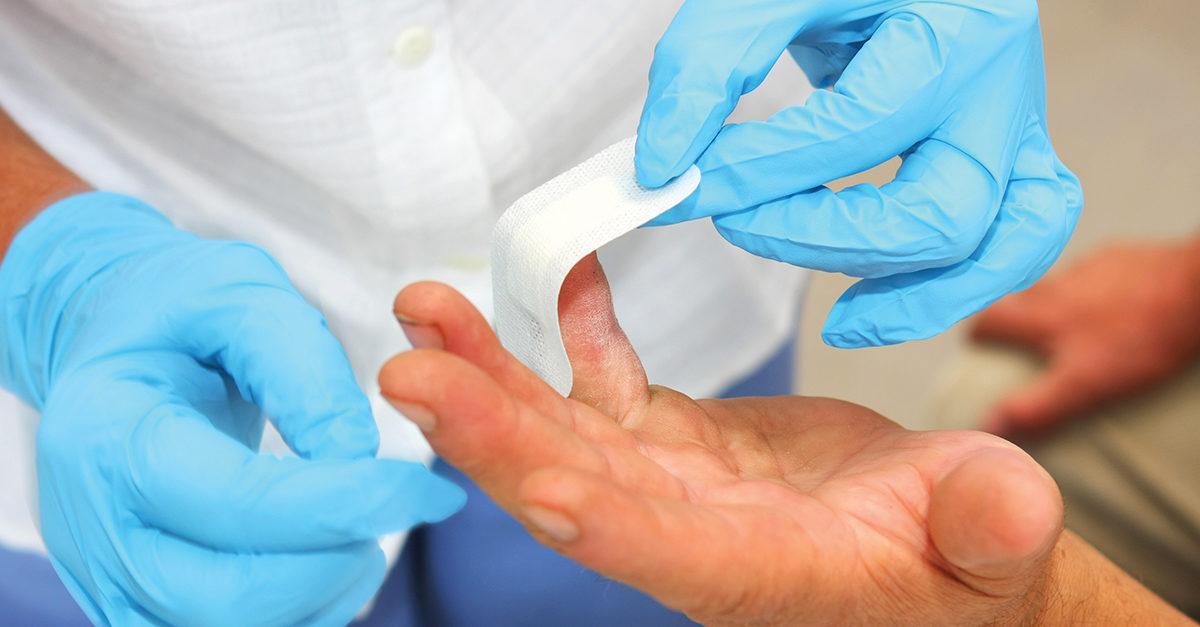Open the door of a janitor closest and you are likely to see gallons of cleaning solutions along with vacuum cleaners, mops, buckets, push brooms, floor machines, sprayers, etc. But you may not find one of the most important items to stock in a custodial supply closet—a first aid kit.
Cleaning can be a dangerous occupation. According to the Bureau of Labor Statistics, in 2015, janitors and cleaning workers suffered about 50,000 injuries requiring one or more days away from work. They also had the 16th highest injury rate of all occupations.
While many of these injuries are the result of physical activities, others are the result of cuts, minor burns, and similar injuries that usually can be treated quickly if a first aid kit is readily available.
Federal First Aid Requirements
Facility managers should store a first aid kit in every janitorial closet, as well as in storage areas that serve all building users. According to the U.S. Department of Labor’s Occupational Safety and Health Administration (OSHA), workplaces are not only required to have a first aid kit on hand, they also are required to have an on-site person trained on how to properly use the kit. OSHA’s standard 29 CFR 1910.151 (b) specifically states:
In the absence of an infirmary, clinic, or hospital in near proximity to the workplace which is used for the treatment of all injured employees, a person or persons shall be adequately trained to render first aid. Adequate first aid supplies shall be readily available.
Which Kit is Right for Your Facility?
In the past, cleaning contractors or facility managers would select a kit based on the number of people in the facility. As of 2016, in what is considered one of the most significant changes to the ANSI Standards for Workplace First Aid Kits and Supplies, there are now two classes of first aid kits available. These classes are based on the assortment and quantity of first aid supplies contained in the kit, rather than the number of people they can treat.
Class A kits: These include supplies to treat the most common workplace injuries, such as minor cuts, scrapes, and sprains. They are intended for use in workplaces that are not considered high-risk zones. Office buildings, churches, parks, recreation facilities, and similar places would not be considered high-risk zones because building users—including cleaning workers—are not required to wear protective gear. (Although it is not required, it is advisable for custodial workers to always wear protective gear, including goggles, disposable gloves, and ear protection.)
Class B kits: These are designed for facilities where building users must wear protective equipment and clothing. Class B kits include a broader range and a larger quantity of supplies, so they can treat more complex injuries.
ANSI refers to the American National Standards Institute, a nonprofit group that develops voluntary standards for U.S. organizations. While ANSI-compliant first aid kits are not required in the workplace, 17 states recommend or require selecting first aid kits that meet ANSI standards. You can check your state’s individual requirements for first aid kits online at daymarksafety.com/osha-state-plans.
Don’t Forget to Restock
OSHA requires that all commercial facilities, even those with very few people working in them, have a first aid kit on the premises. But even more crucial than having a kit is stocking a kit.
Many manufacturers make restocking easy. Some provide each item within their kits as an individual refill. At least one provides a bundled refill approach, combining multiple items that are generally used together within one order. In some cases, purchasers can order new refill bundles that meet ANSI-compliance standards. With older first aid kits, selecting a new kit may be necessary.
Purchasing and regularly restocking a first aid kit helps to prevent a minor work injury from becoming more severe, and can also help to mitigate some liability issues. Building managers and contract cleaners must always make worker safety a top priority. Ensuring that first aid kits are available and accessible is one of the best ways to do this.



